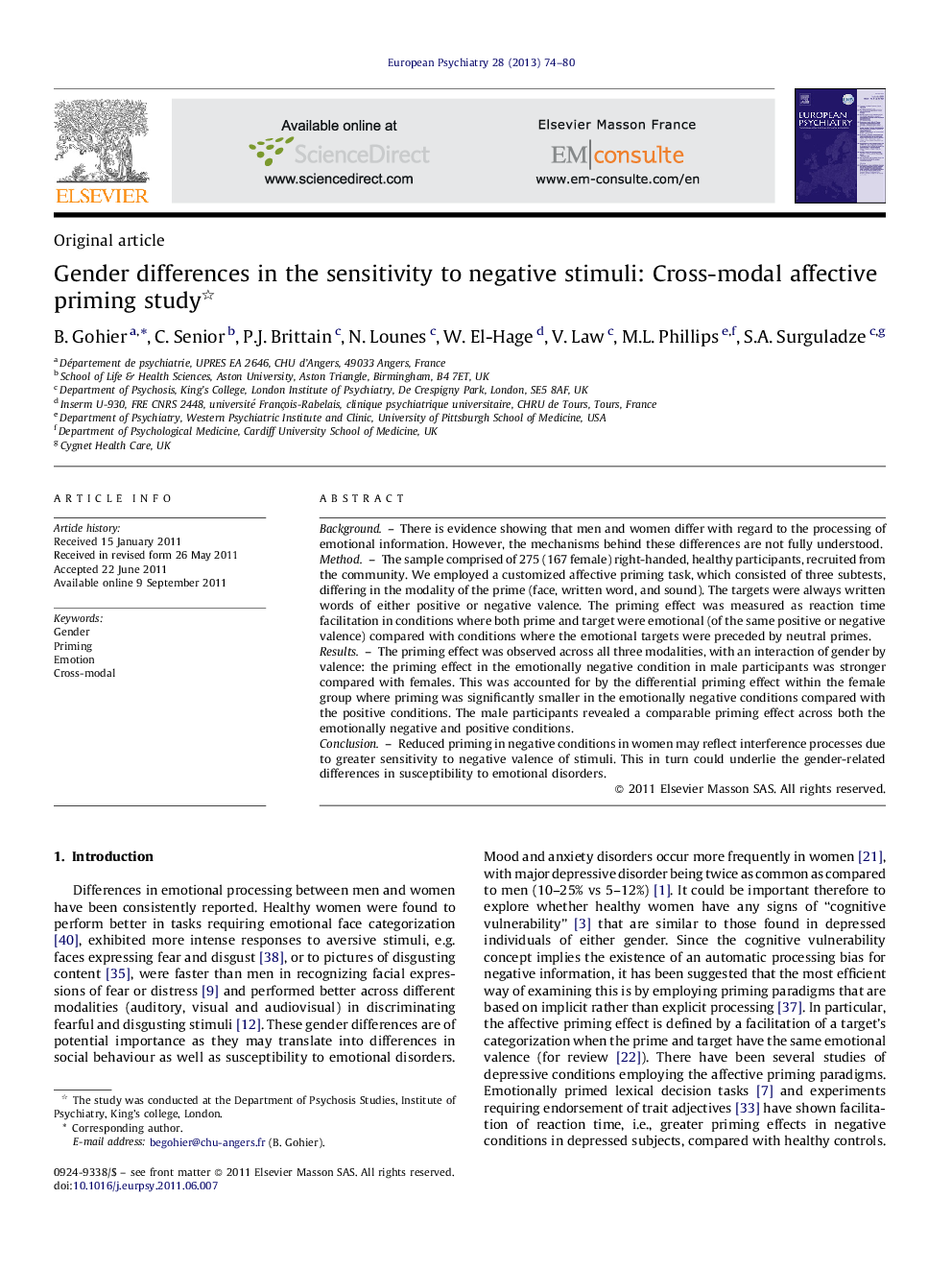| Article ID | Journal | Published Year | Pages | File Type |
|---|---|---|---|---|
| 4184414 | European Psychiatry | 2013 | 7 Pages |
BackgroundThere is evidence showing that men and women differ with regard to the processing of emotional information. However, the mechanisms behind these differences are not fully understood.MethodThe sample comprised of 275 (167 female) right-handed, healthy participants, recruited from the community. We employed a customized affective priming task, which consisted of three subtests, differing in the modality of the prime (face, written word, and sound). The targets were always written words of either positive or negative valence. The priming effect was measured as reaction time facilitation in conditions where both prime and target were emotional (of the same positive or negative valence) compared with conditions where the emotional targets were preceded by neutral primes.ResultsThe priming effect was observed across all three modalities, with an interaction of gender by valence: the priming effect in the emotionally negative condition in male participants was stronger compared with females. This was accounted for by the differential priming effect within the female group where priming was significantly smaller in the emotionally negative conditions compared with the positive conditions. The male participants revealed a comparable priming effect across both the emotionally negative and positive conditions.ConclusionReduced priming in negative conditions in women may reflect interference processes due to greater sensitivity to negative valence of stimuli. This in turn could underlie the gender-related differences in susceptibility to emotional disorders.
